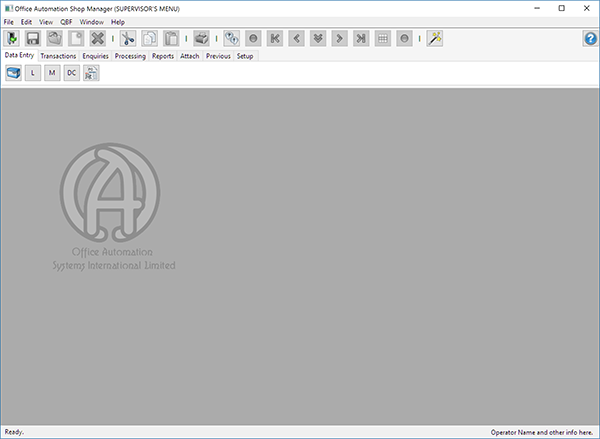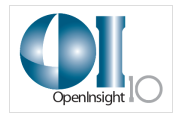 The February 14, 2017 issue of Database Trends and Applications features an article written by Stephanie Simone titled ITMS Uses Revelation Software to Stay Ahead of the Curve.
The February 14, 2017 issue of Database Trends and Applications features an article written by Stephanie Simone titled ITMS Uses Revelation Software to Stay Ahead of the Curve.
OPTO Software, part of iTMS Software Pty Ltd, provides manufacturing inventory software, including ERP solutions, to a wide variety of industries. Customers span the fields of manufacturing, mining, civil, fabrication, and engineering as well as distribution, retail and wholesale, construction, and importing and exporting.
Based in Brisbane, Australia, Opto has been providing ERP, material requirements planning, manufacturing and inventory software solutions to Australian businesses since the early 1990s, and in turn, these software solutions have enabled smaller manufacturers to close the technological and competitive gap between their business and larger-scale market leaders.
Used by hundreds of clients across Australia, Opto prides itself on being small enough to be highly flexible but large enough to deliver the latest technology trends to its customers while shielding them from the underlying complexity. Providing steadfast support, Opto seeks to guide customers through every phase of their installation, from evaluation and feature selection to technical support and help desk enquiries.
OpenInsight at the Core
“Our focus is on the manufacturing technologies you use to build things. Surrounding that, we also plug into accounting systems,” said Jeremy Bolton, managing director. “Revelation Software’s OpenInsight is the heart of our business; our whole product is based on it.”
According to Bolton, a key differentiator for ITMS/OPTO is its deep understanding of the nuances of manufacturing. Revelation supports that agility, ensuring that OPTO platform is easily configured.
“We’re very good at making software fit into many applications with the ability to deliver it quickly and cost effectively, while also making it easy to understand,” Bolton said. “What sets us apart is the ability for the OPTO platform to be easily configured to precise customer requirements.”
The company’s partnership with Revelation was forged after OPTO’s CEO sought to build an effective and simplified system to solve manufacturing issues.
Ability to Adapt
Revelation has made OPTO’s platform very adaptable. It’s simple to build on and it supports both emerging and existing applications, according to Bolton.
Because it runs on a MultiValue database, OPTO can add new capabilities to its platform without affecting the data model.
“If someone needs something with Revelation, the architecture of our product enables us to add the new capability without changing the underlying data model of every other customer,” Bolton said. “Our software can fit in many applications.”
MultiValue database technology can be quickly tailored to unusual requirements and it can talk directly to the CRM copy machine, Bolton explained.
“When we are talking to people about layout, normally we have to get spreadsheet, but this technology allows us to do a layout quickly and effectively,” Bolton said. “Revelation gives us the flexibility we need when responding to customer requirements.”
Built for the Future
Reliability and compatibility are also why OPTO has stayed with Revelation for more than 20 years.
The technology helps OPTO support its customers by providing them with a platform that delivers better customer outcomes, quickly, and cost-effectively.
The MultiValue aspect of the platform make it possible to process requests from customers quickly and with a speed that relational database management systems can’t provide, according to Bolton.
“Running Microsoft SQL Server or Oracle didn’t make any sense,” Bolton said. “There is nothing else you can find to handle so much data.”
Additionally, the cost to customize the platform for a customer was “astronomical,” whereas using Revelation makes the platform cost-effective for the client, Bolton explained.
However, if customers do need to utilize relational database management software, the OPTO platform can integrate to any part of the database that’s necessary, he noted.
Innovation with Revelation
Recently, ITMS/OPTO and Revelation collaborated on adding RESTful application programming interfaces (APIs) to ITMS/OPTO’s platform. The new capability allows the company to plug into modern web platforms such as Salesforce.
Moreover, the use of RESTful APIs means that ITMS/OPTO doesn’t have to do heavy manually coding to add capabilities as it did before, Bolton explained. Using RESTful APIs will enable integration with the increasing number of best-in-class cloud-based, mobile, and niche applications.
“Before, if we needed a CRM system, we’d have to ‘be’ the CRM system,” Bolton said. “Now, we can just plug into the world’s best CRM system.”
This has been a key step in the right direction as OPTO looks to integrate more web-based products, and to allow third parties to connect into its systems.
Opto gets requirements from customers and can build what they need, but in the past, Opto would be constrained, said Bolton. “What we want to do is make it so that any third party can pick it up and do an order.”
The company already utilizes integration in the cloud effortlessly, according to Bolton.
“Integration in the cloud becomes much easier, that’s one of the big benefits you get from RESTful APIs,” Bolton said. “Cloud-to-cloud products integrate almost seamlessly. From a customer’s point of view, the backups just get done.”
Previously, the company experimented with OpenInsight for Web (O4W), a user friendly web development environment that allowed the company to run its platform on a handheld device. Though it worked well, the company eventually needed a heavier mobile development environment and implemented a third-party connector, moving toward Revelation’s RESTful API tools.
Looking Ahead to the Future
The feedback from ITMS customers for over nearly 20 years has uniformly excellent, according to Bolton.
“Some may actually know that Revelation’s OpenInsight is platform the underlying our product, but many do not know, and this is in fact a benefit as the platform is transparent to the customer so they can focus on the business outcomes,” Bolton said.
As the manufacturing business changes, Bolton says Revelation continues to help his company stay ahead of the curve.
“There’s a complexity that we solve that very few other organizations can,” Bolton said. “Revelation helps us do that in agile manner.”
According to Bolton, Revelation also continues to deliver enhancements to OpenInsight in each release that keep the platform relevant and up to date.
“There are a series of features that are coming in the next release with OpenInsight 10 that we believe we will be able to use in continuing to deliver successful business outcomes to our customers,” Bolton said.
 There has been a lot of talk about REST and Restful APIs in recent months. Don spoke about SRP’s use of RESTful APIs in his conference presentation last year and I noticed that other MultiValue vendors are starting to support the technology – it’s seems to have now moved beyond the latest must have.
There has been a lot of talk about REST and Restful APIs in recent months. Don spoke about SRP’s use of RESTful APIs in his conference presentation last year and I noticed that other MultiValue vendors are starting to support the technology – it’s seems to have now moved beyond the latest must have.





 The February 14, 2017 issue of
The February 14, 2017 issue of 